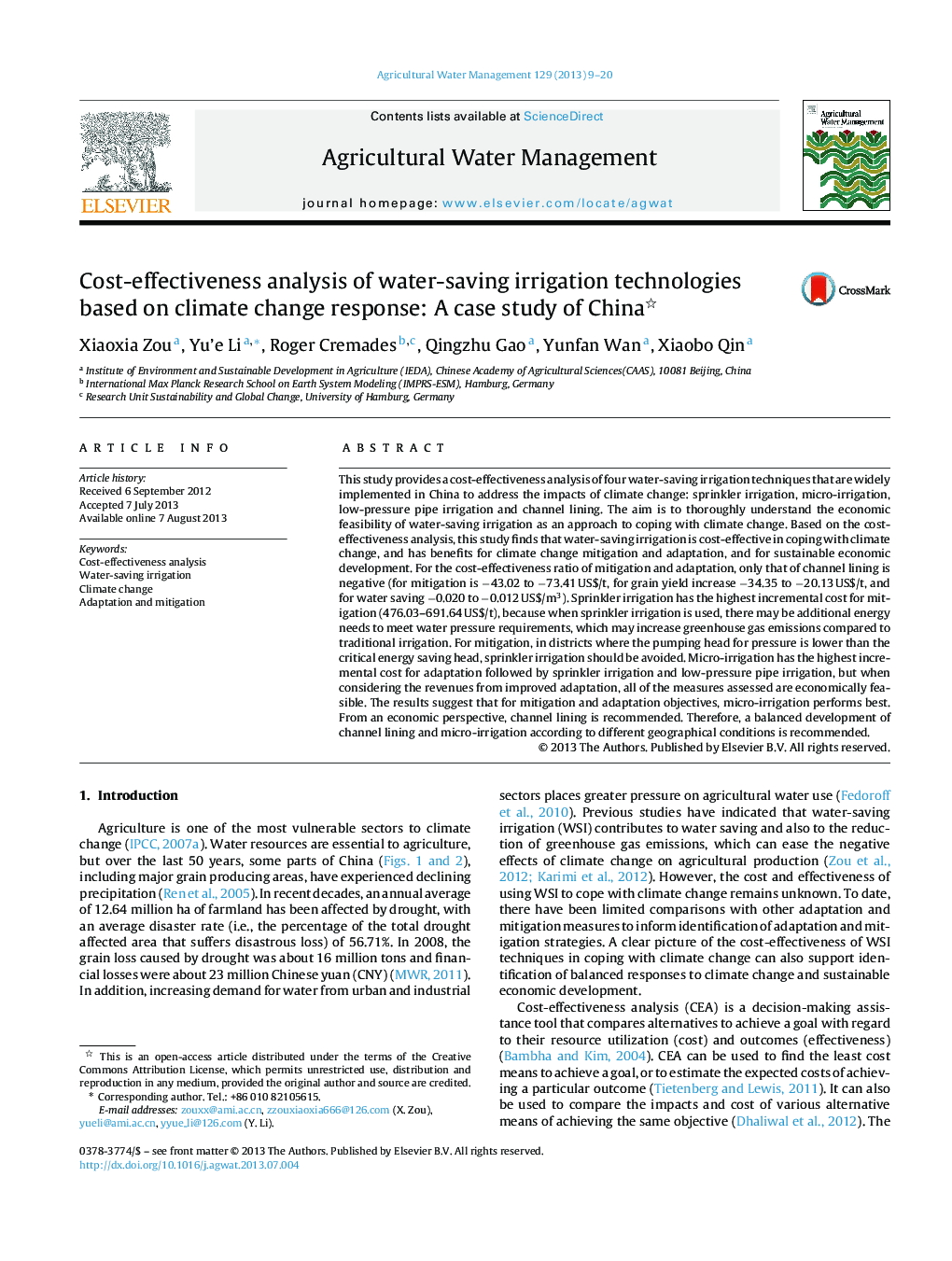| Article ID | Journal | Published Year | Pages | File Type |
|---|---|---|---|---|
| 6364032 | Agricultural Water Management | 2013 | 12 Pages |
Abstract
This study provides a cost-effectiveness analysis of four water-saving irrigation techniques that are widely implemented in China to address the impacts of climate change: sprinkler irrigation, micro-irrigation, low-pressure pipe irrigation and channel lining. The aim is to thoroughly understand the economic feasibility of water-saving irrigation as an approach to coping with climate change. Based on the cost-effectiveness analysis, this study finds that water-saving irrigation is cost-effective in coping with climate change, and has benefits for climate change mitigation and adaptation, and for sustainable economic development. For the cost-effectiveness ratio of mitigation and adaptation, only that of channel lining is negative (for mitigation is â43.02 to â73.41Â US$/t, for grain yield increase â34.35 to â20.13Â US$/t, and for water saving â0.020 to â0.012Â US$/m3). Sprinkler irrigation has the highest incremental cost for mitigation (476.03-691.64Â US$/t), because when sprinkler irrigation is used, there may be additional energy needs to meet water pressure requirements, which may increase greenhouse gas emissions compared to traditional irrigation. For mitigation, in districts where the pumping head for pressure is lower than the critical energy saving head, sprinkler irrigation should be avoided. Micro-irrigation has the highest incremental cost for adaptation followed by sprinkler irrigation and low-pressure pipe irrigation, but when considering the revenues from improved adaptation, all of the measures assessed are economically feasible. The results suggest that for mitigation and adaptation objectives, micro-irrigation performs best. From an economic perspective, channel lining is recommended. Therefore, a balanced development of channel lining and micro-irrigation according to different geographical conditions is recommended.
Related Topics
Life Sciences
Agricultural and Biological Sciences
Agronomy and Crop Science
Authors
Xiaoxia Zou, Yu'e Li, Roger Cremades, Qingzhu Gao, Yunfan Wan, Xiaobo Qin,
